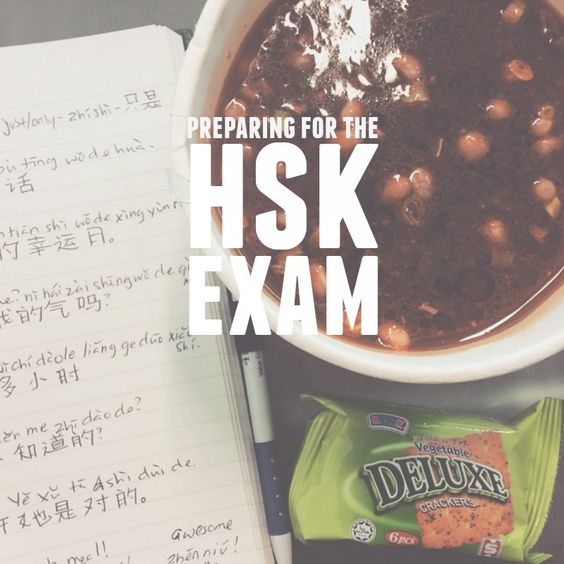How to Learn Mandarin Chinese
Part1
Mastering the Basics
-
1
Practice using the four Mandarin tones. Mandarin Chinese is a tonal language, which means that different tones can change the meaning of a word, even if the pronunciation and spelling are otherwise the same. It is essential to learn the different tones if you wish to speak Mandarin Chinese correctly. Mandarin Chinese has four main tones, as follows:- The first tone is a high, flat tone. Your voice stays flat, with no rise or dip in the way it sounds. Using the word "ma" as an example, the first tone is indicated using the symbol above the letter a: "mā".
- The second tone is a rising tone. Your voice rises from a low to middle pitch, as if you were asking someone to repeat something by saying "huh?" or "what?" The second tone is indicated using the symbol "má".
- The third tone is a dipping tone.The pitch goes from middle to low to high, like when you say the letter "B". When two third tone syllables are near each other, the second one retains its third tone sound while the first takes the sound of the second tone. The third tone is indicated using the symbol "mǎ".
- The fourth tone is a lowering tone. The pitch goes rapidly from high to low, as if giving a command e.g. stop! Or as if you're reading a book and have come across something new and interesting and are saying "huh". The fourth tone is indicated using the symbol "mà".
- Easy enough? If not, don't fret. It's definitely recommended to hear the tones demonstrated by a native speaker, since it's hard to get an idea of what they sound like purely through text.
-
2
Learn the sounds Mandarin uses- The popular phonetic system, pinyin (characters: 拼音), is very helpful. Learning pinyin can be tricky, but most letters you will encounter sound very similar to their English counterpart. The new sounds you'll have to learn include: "h", "x", "q", "j", "r", and "ü". There are also other letter combinations you need to learn, including "zh", "ch", and "sh".
- "h": Almost like English "h", but a little bit throatier.
- "x": Place the tip of your tongue near where your bottom teeth meet their gums, and the middle of your tongue near the roof of your mouth. Then, blow air out of your mouth. It will sound similar to "sh", but closer to "s".
- "q": Just like "x" but use a "t" sound to start it. It will sound similar to "ch", but closer to "ts".
- "j": Similar to "q", but you'll need to use voice in this one. Instead of just breathing air out, do it with sound behind it. The difference between "q" and "j" is like the difference between "s" and "z" in English.
- "r": This letter makes a different sound when it's at the beginning of a syllable versus when it's at the end. When it is at the start, it's a tricky one, and may need more practice. Take the tip of your tongue and lift it up until it almost touches the roof of your mouth. The sides of your tongue should touch around your back molars on either side. Then, breathe with your voice. It should almost sound like the "s" in "vision", but closer to "r". When this letter is at the end of a syllable, it sounds just like an "r" in English.
- "ü": This letter is the sixth vowel of Chinese, and is not one found in English. However, it is relatively easy to say. First, round your lips as if you were about to say "oo", as in "food". Then, make the sound of "ee" that you hear in "bee".
- "zh": Very similar to English "j" in "jar", but position your mouth the same way as for Mandarin "r".
- "ch": Very similar to English "ch" in "chew", but position your mouth the same way as for Mandarin "r".
- "sh": Very similar to English "sh", but position your mouth the same way as for Mandarin "r". The sounds "r", "zh", "ch", and "sh" are known as the "retroflex" initials because they are a sound family of a sort.
- The popular phonetic system, pinyin (characters: 拼音), is very helpful. Learning pinyin can be tricky, but most letters you will encounter sound very similar to their English counterpart. The new sounds you'll have to learn include: "h", "x", "q", "j", "r", and "ü". There are also other letter combinations you need to learn, including "zh", "ch", and "sh".
-
3
Memorize simple vocabulary. No matter what language you're learning, the more words you have at your disposal, the sooner you will become fluent. Therefore, the next thing to do is to memorize some useful Chinese vocabulary.- Some good vocabulary lists to start with includes: times of day (morning: zǎo shàng, afternoon: xià wǔ; 下午, evening: wǎn shàng; 晚上) body parts (head: tóu; 头, feet: jiǎo; 脚, hands: shǒu; 手) food (beef: niú ròu; 牛肉, chicken: jī; 鸡, egg: jī dàn; 鸡蛋, noodles: miàn tiáo; 面条) along with greetings, colors, days of the week, months, transport words, weather, etc.
- When you hear a word in English, think about how you would say it in Mandarin. If you don't know what it is, jot it down and look it up later. It's handy to keep a little notebook on you for this purpose. Attach little Chinese labels (with the character, the pinyin and the pronunciation) to items around your house, such as the mirror, the coffee table and the sugar bowl. You'll see the words so often that you'll learn them without realizing it!
- Although having a wide vocabulary is good, remember that in Mandarin, accuracy is more important. It's no good learning a word if you can't pronounce it properly, using the correct tone, as different pronunciations could have entirely different meanings. For example, using the wrong tone (using mā instead of má) could be the difference between saying "I want cake" and "I want coke" - two completely different meanings.
Expert Answer
Q
When asked, “How long does it take to learn basic Mandarin?”

EXPERT ADVICE
Godspeed Chen, a Chinese translator, responded: “It might take you one or two weeks to learn some useful expressions. Becoming fluent can take one or more years.”
-
4
Learn how to count. Luckily, the Mandarin numerical system is fairly straightforward and logical, and once you have learned the first ten numbers you will be able to count to 99.- Below you will find the numbers one to ten, written in simplified Chinese characters, followed by the Hanyu pinyin translation and the correct pronunciation. Make sure to practice saying each number using the correct tone.
- One: written as (一) or yī, pronounced [eee]
- Two: written as (二) or èr, pronounced [err]
- Three: written as (三) or sān, pronounced [saan]
- Four: written as (四) or sì, pronounced [ssuh]
- Five: written as (五) or wǔ, pronounced [oo]
- Six: written as (六) or liù, pronounced [lee-yoe]
- Seven: written as (七) or qī, pronounced [chi]
- Eight: written as (八) or bā, pronounced [baa]
- Nine: written as (九) or jiǔ, pronounced [jee-yoe]
- Ten: written as (十) or shí, pronounced [sh]
- Once you have mastered numbers one to ten, you can continue counting in double digits by saying the number in the tens' position, then the word 十, followed by the number in the one's position. For example:
- The number 48 is written as sì shí bā (四十八), literally meaning "four tens plus eight". The number 30 is written as sān shí (三十), literally meaning "three tens". The number 19 is written as yī shí jiǔ (一十九), literally meaning "one ten plus nine" (however in most Mandarin dialects the initial yī is omitted from numbers in the teens, as it is deemed unnecessary).
- The word for hundred in Mandarin is (百) or baǐ, so 100 is written as yì baǐ, 200 is written as èr baǐ, 300 is written as sān baǐ, etc.
- Below you will find the numbers one to ten, written in simplified Chinese characters, followed by the Hanyu pinyin translation and the correct pronunciation. Make sure to practice saying each number using the correct tone.
-
5
Learn some basic conversational phrases. Once you have a basic grasp of vocabulary and pronunciation, you can move on to learning basic conversational phrases which are used in everyday Chinese speech.- Hello- 你好- nǐhǎo, pronounced [nee how]
- What is your last name(surname)? (formal )- 您贵姓? - nín guì xìng, pronounced [neen gway shing]
- or 你姓什么?- nǐ xìng shén me (inf.), pronounced [nee shing shurn muh]
- What's your name?- 你叫什么名字? - nǐ jiào shén me míng zì, pronounced [nee jee-ou shurn muh ming zi] [1]
- Yes- 是 - shì, pronounced [sh]
- No- 不是 - bú shì, pronounced [boo sh]
- Thank you- 谢谢 - xiè xiè, pronounced [shie shie]
- You're welcome- 不用谢 - bú yòng xiè, pronounced [boo yong shee-e]
- Excuse me- 对不起 - duì bu qǐ, pronounced [dway boo chee]
- I don't understand- 我不懂 - wǒ bù dǒng, pronounced [wuo boo downg]
- Goodbye- 再见 - zài jiàn, pronounced [zay jee-en]










